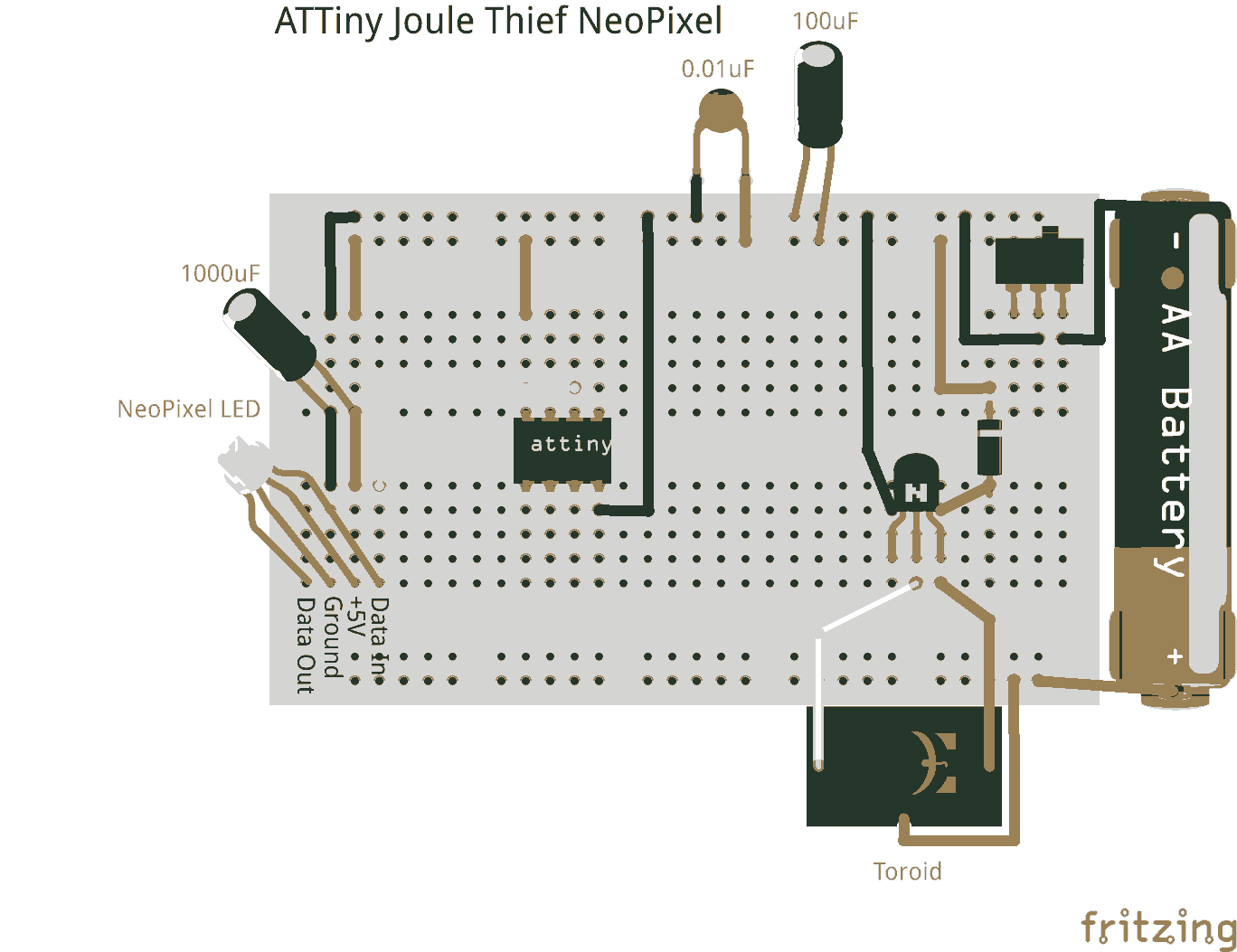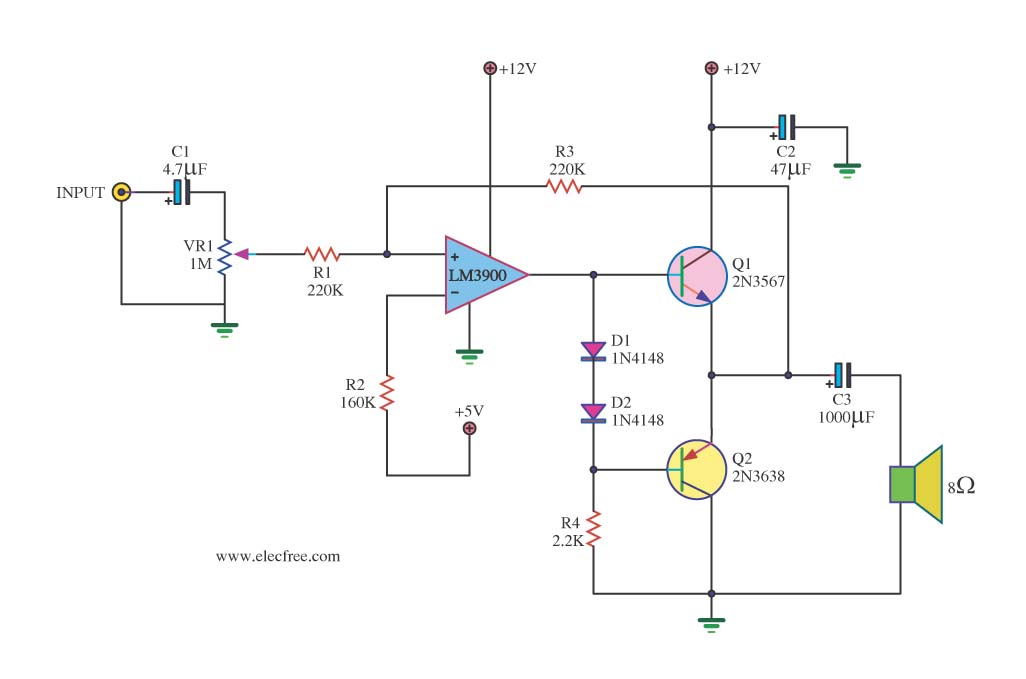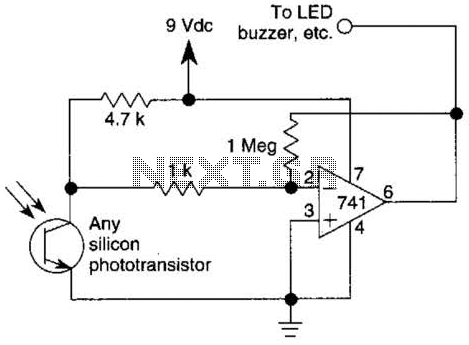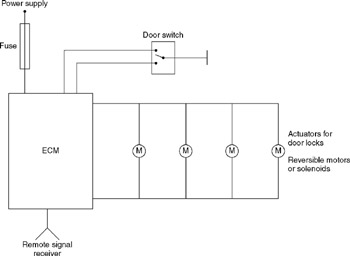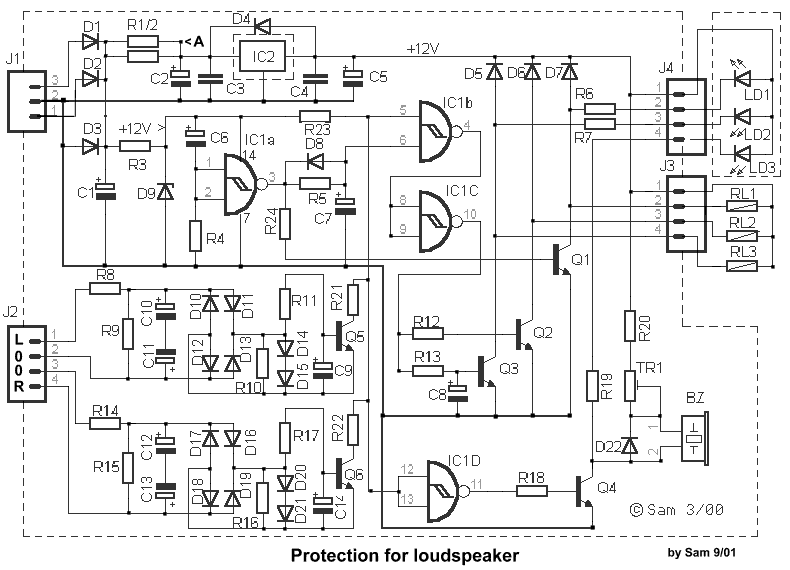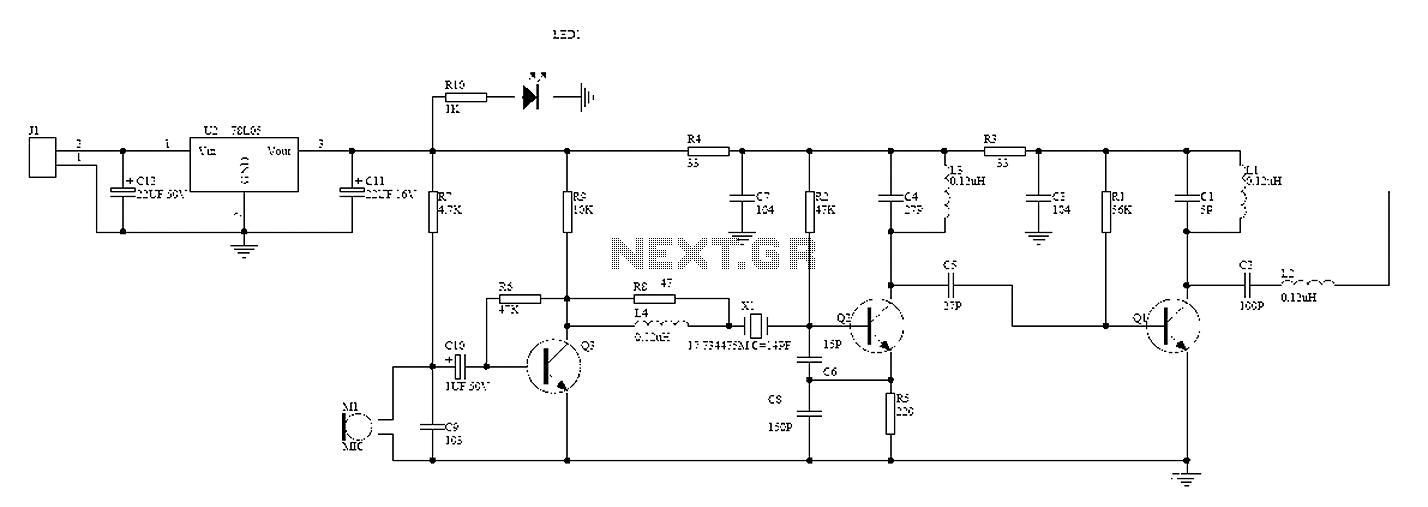
using call detector circuit schematic
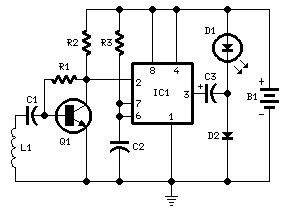
The induction coil detects the magnetic field flux during phone calls, amplifies the signal, and triggers the LED. These circuits are designed for the phone to rest on the pickup coil. The electromotive force (emf) from the bell electromagnets is captured. As mentioned, these circuits are not compatible with modern phones. The input oil in the circuit is intended to capture the radio signal from the cell phone when it receives a call, indicating that it is "receiving the ringing." However, most RF circuits tend to malfunction when assembled on a breadboard due to the disorganized wiring, which leads to interference and oscillation. The capacitance between the rows of contacts is excessively high, and the contacts can be intermittent. It is suggested to refer to the 7555 datasheet, which specifies a "Guaranteed Supply Voltage Range" of 2V to 18V, indicating that the chip operates with a minimum of 2 volts. Some may function at 1.5 volts, while others may not. Therefore, using a pair of 1.5-volt cells to test the circuit at approximately 3 volts is recommended. Adjustments to resistor values may be necessary, but starting at 3 volts is advisable, assuming proper wiring. A higher voltage may also be beneficial, as noted regarding RF considerations.
The described circuit employs an induction coil to sense the magnetic field generated by a ringing phone, which activates an LED indicator. The design requires the phone to be placed directly on the pickup coil to ensure effective signal capture. The induction coil's operation is based on the principle of electromagnetic induction, where the changing magnetic field from the phone generates a voltage in the coil, allowing for signal amplification.
The circuit's input stage utilizes a specialized oil that enhances the detection of the radio frequency (RF) signal emitted by the phone, particularly during incoming calls. This signal is crucial for the circuit's functionality, as it indicates the phone is ringing. However, it is important to note that RF circuits can be sensitive to layout and construction; hence, breadboarding can introduce complications such as unwanted oscillations and interference due to the high capacitance between closely spaced contacts.
The 7555 timer IC is referenced for its operational voltage range, which is essential for ensuring the circuit functions correctly. The recommendation to test the circuit at 3 volts using two 1.5-volt cells is grounded in the need to provide sufficient power while minimizing the risk of damage to the components. Adjustments to the resistors may be necessary to optimize performance, particularly if the circuit is not responding as expected.
In summary, the circuit design focuses on capturing the electromagnetic signals from a phone to activate an LED, while also addressing common pitfalls in RF circuit construction, particularly on breadboards. Careful consideration of component specifications and circuit layout will enhance the likelihood of successful operation.and I think I understand what`s going on. the induction coil senses the magnetic field flux around when the phone calls, boosts the signal, and pulses the LED. These types of circuits were meant to have the phone sitting on the pickup coil. The emf from the bell electromagnets were picked up. As Nigel said they won`t work with modern phones. The c oil at the input of the circuit is supposed to pickup the radio signal of the cell-phone when it is called and it is transmitting, "I am receiving the ringing". But most RF circuits do not work when made on a breadboard because the tangle of wires are confusing, pickup interference and cause oscillation.
The capacitance between rows of contacts is too high. Also the contacts are intermittent. I am going to venture a guess. If you look at the 7555 data sheet they are pretty clear about " Guaranteed Supply Voltage Range. . . . . . . . . 2V to 18V". What they are saying is that the chip will work with a minimum of 2 volts. Some will work at 1. 5 volts while some may not. Given that, I would use a pair of 1. 5 volt cells and try running at about 3 volts as a test. You may need to change a few values of resistors but I would give 3 volts a try. That assumes you are wired correctly. That would be my first guess anyway. AG has a good point with RF but I would try a higher voltage. 🔗 External reference
The described circuit employs an induction coil to sense the magnetic field generated by a ringing phone, which activates an LED indicator. The design requires the phone to be placed directly on the pickup coil to ensure effective signal capture. The induction coil's operation is based on the principle of electromagnetic induction, where the changing magnetic field from the phone generates a voltage in the coil, allowing for signal amplification.
The circuit's input stage utilizes a specialized oil that enhances the detection of the radio frequency (RF) signal emitted by the phone, particularly during incoming calls. This signal is crucial for the circuit's functionality, as it indicates the phone is ringing. However, it is important to note that RF circuits can be sensitive to layout and construction; hence, breadboarding can introduce complications such as unwanted oscillations and interference due to the high capacitance between closely spaced contacts.
The 7555 timer IC is referenced for its operational voltage range, which is essential for ensuring the circuit functions correctly. The recommendation to test the circuit at 3 volts using two 1.5-volt cells is grounded in the need to provide sufficient power while minimizing the risk of damage to the components. Adjustments to the resistors may be necessary to optimize performance, particularly if the circuit is not responding as expected.
In summary, the circuit design focuses on capturing the electromagnetic signals from a phone to activate an LED, while also addressing common pitfalls in RF circuit construction, particularly on breadboards. Careful consideration of component specifications and circuit layout will enhance the likelihood of successful operation.and I think I understand what`s going on. the induction coil senses the magnetic field flux around when the phone calls, boosts the signal, and pulses the LED. These types of circuits were meant to have the phone sitting on the pickup coil. The emf from the bell electromagnets were picked up. As Nigel said they won`t work with modern phones. The c oil at the input of the circuit is supposed to pickup the radio signal of the cell-phone when it is called and it is transmitting, "I am receiving the ringing". But most RF circuits do not work when made on a breadboard because the tangle of wires are confusing, pickup interference and cause oscillation.
The capacitance between rows of contacts is too high. Also the contacts are intermittent. I am going to venture a guess. If you look at the 7555 data sheet they are pretty clear about " Guaranteed Supply Voltage Range. . . . . . . . . 2V to 18V". What they are saying is that the chip will work with a minimum of 2 volts. Some will work at 1. 5 volts while some may not. Given that, I would use a pair of 1. 5 volt cells and try running at about 3 volts as a test. You may need to change a few values of resistors but I would give 3 volts a try. That assumes you are wired correctly. That would be my first guess anyway. AG has a good point with RF but I would try a higher voltage. 🔗 External reference
